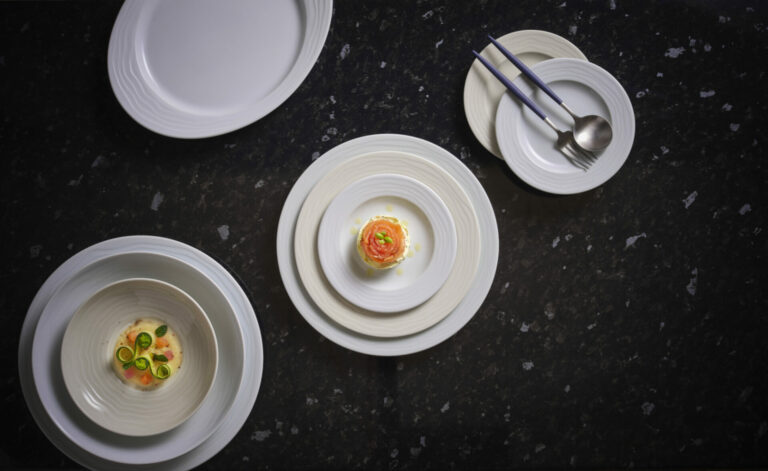

Porcelain, on its own, brings life to a meal. Through its beauty and soft touch, it is perfect to enhance a food or delicacy. But excellence was only possible to achieve, after several centuries improving its production techniques. In this article, we let you know the origin and evolution of this refinement material.
The history of porcelain takes us back to the 7th up to the 10th centuries, marked by the Tang dynasty in China. The waterproof and translucent material – then called yao – was born from the mixture of two minerals, which remain an integral part of its composition: feldspar and kaolin. This last one derives from the word Kauling, originating from the hill of Jauchau Fu, in the north of the country, where the raw material might have been obtained.
Through a very archaic process and the subjection to a firing of 1450 degrees Celsius, the Chinese concluded that the characteristics of the feldspar provided the porcelain with vitrification, while the kaolin ensured the shape of the piece.
It was by the hand of the Italian Marco Polo that Europe got to know porcelain, disseminated by of the Portuguese, French and English India’s Companies. Curiously, it was only in 1707 that the German alchemists Johann Friedrich Böttger and Ehrenfried Walther von Tschirnhaus were able to unravel the formula of true Chinese porcelain.
If the French bet on the whiteness and purity of this material, the English developed the mastery and precision across finishing, making the articles in porcelain true pieces of art.
Throughout the centuries, there have been great developments in the process of porcelain paste composition, fostered by technological advances in equipment and manufacturing techniques.
Produced from clay and quartz, to which feldspar and kaolin combine, porcelain is obtained through various manufacturing processes: filling, isostatic pressing, high-pressure filling and counter-molding.
After a first firing at 1000 ºC, in a cycle up to 18 hours, the pieces are fired again at a temperature of up to 1400 ºC, which provides them with impermeability and makes them extremely resistant. Only later, in high firing, the decoration is applied on the glaze, giving rise to pieces of an extraordinary beauty and quality.
Costa Verde has strongly invested in innovation. We bet on state-of-the-art equipment, improving processes and strengthening human resources. We have, therefore, one of the most modern porcelain factories in the world.
We require our articles to be subjected to rigorous testing. This is the only way to ensure a product of maximum quality and resistant to large-scale use and high temperature washes.
